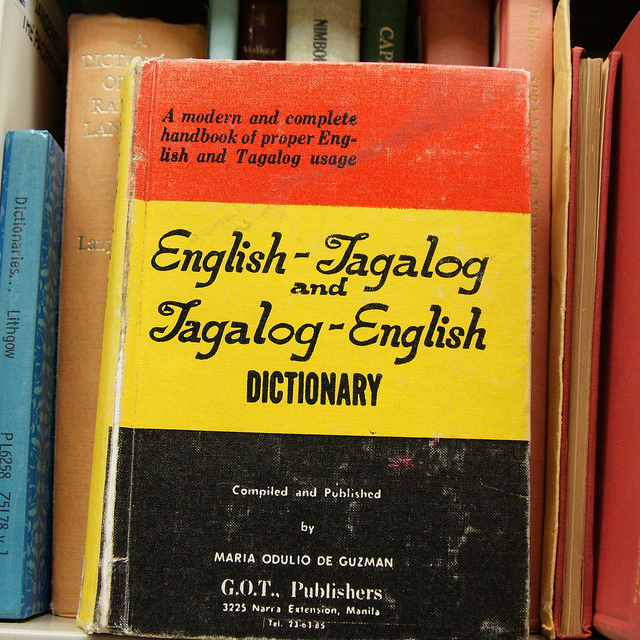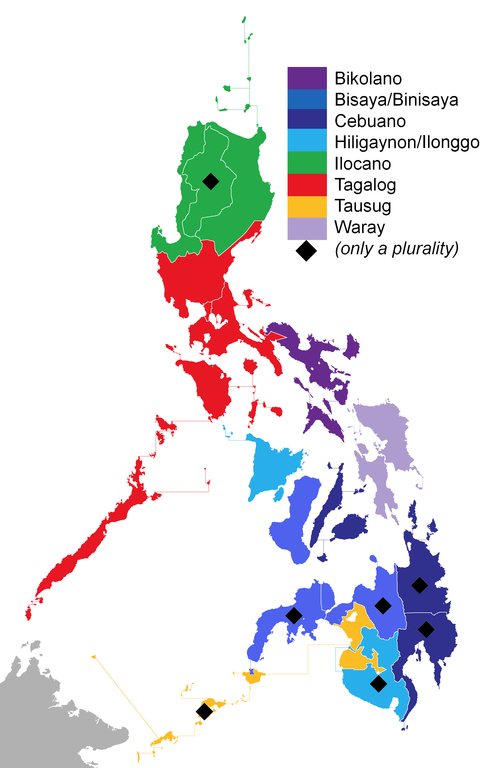Difference Between Tagalog and Filipino
Filipino and Tagalog are both common languages used in the Philippines. Millions of people have used both languages for more than 50 years. The two languages form part of the 185 other dialects present in the state. Filipino has been the official language in the Philippines since the year 1987. On the other hand, the Tagalog language, was the official language from 1897. It was associated with the Tagalog ethnic community, hundreds of years ago.
It is believed that the name Tagalog was initially TAGA-ILOG during the Spanish regime. The community that lived along the Pasig river were known as Taga-ilog, but since the Spaniards couldn’t pronounce the term well, the name was shortened to Tagalog. Since then the language has evolved, it has also formed the base of other languages used amongst Filipinos.

What is Tagalog?
Tagalog in English means ‘a river dweller’. The language is believed to be more than 100 years old. The original speakers of the dialect were people who lived along the Pasig river, some in the Nueva Ecija and Tarlac provinces. There were also traces of speakers in Batangas, Marinduque, Romblon, Mindoro, Palawan and Quezon.
Several other languages were born from variations of Tagalog including Pampango, Ilokano, Bicolano, Zambal, Waray, Hiligaynon, Cebuano and Pangasinan. The fastest evolving and most extensive variety of the Tagalog language is Manila. The dialect was up to recently used in mass media, (film, radio, television, books and stage plays).
The language also contains several sociolects adopted by different classes and sectors of the society. For example, there is, ‘swardspeak’ used by gay individuals, ‘colegiala slang’ used by females brought up in exclusive schools and, ‘conio slang’ used by the rich men who are also fluent English speakers.

What is Filipino?
Filipino, according to the Philippine Constitution initiated in 1986, is the country’s official language. The name Filipino is fully Spanish and is related to Philip who was a king during the exploration age. The language is mostly derived from Tagalog, has several additions from other Philippine languages and foreign languages including English, Chinese and Spanish. Filipino also contains traces of Hindi and Bahasa Malay.
The language is still a work in progress and is continuously evolving with new additions from several sources. Currently there are 28 letters in the language, (A, B, C, D, E, F, G, H, I, J, K, L, M, N, Ñ, NG, O, P, Q, R, S, T, U, V, W, X, Y, and Z). There are close to 28 million people in the world who speak the language. Filipino is simple has lenient rules in the structuring of sentences and contains less vocabulary. The language is currently uses alongside English as the main channel of communication among the Philippines.
Differences Between Tagalog and Filipino
1) Structure
Tagalog has much more vocabulary, it also contains many rules and is strict in sentence structuring. Tagalog also has more technical terms. Filipino is simple, easy to learn and construct sentences. It is also much more lenient with fewer rules.
2) Age
Tagalog has been used for more than 100 years in the Philippines. Filipino/ Philipino has been used for close to 50 years.
3) Origin
Tagalog is the original language which started with the Taga-ilog ethnic community along the Pasig river. Filipino originated from the Tagalog language and has since borrowed several words from other languages such as Spanish, English and Chinese.
4) Number of Letters
Filipino has a total of 28 letters A, B, C, D, E, F, G, H, I, J ,K, L, M, N, Ñ, NG, O, P, Q, R, S, T, U ,V ,W ,X ,Y, and Z. Tagalog has similar letters without the Ñ.
5) National Language
Tagalog was initiated as the official language in the year 1897. Filipino was made the official language in the Philippines in the year 1987.
6) Sociolects
Sociolects are language varieties or social dialects used by a specific socioeconomic class. Tagalog contains several of them. Filipino, on the other hand, has none that are strongly highlighted or pronounced in the society.
Tagalog vs Filipino

Summary of Tagalog vs Filipino
- Filipino sometimes referred to as Philipino, was derived from Tagalog and several other languages.
- Filipino is currently the Philippines official language alongside English. It was made the official language in 1987.
- Filipino has more letters A, B, C, D, E, F, G, H, I, J, K, L, M, N, Ñ, NG, O, P, Q, R, S, T, U ,V ,W ,X ,Y, and Z compared to Tagalog.
- Tagalog was the official language from 1897 till 1987.
- Tagalog was initially the language among the Taga-ilog community who dwelled along the Pasig river.
- Tagalog has been used for more years than Filipino.
- The structure of the Tagalog language is strict with stringent rules and technical terms.
- Filipino is much simpler, has less vocabulary and lenient rules in sentence structuring.
- Difference Between S Corp and C Corp - September 9, 2018
- Difference Between Terrace and Balcony - September 9, 2018
- Difference Between Anabaptists and Evangelicals - August 31, 2018
Search DifferenceBetween.net :
Leave a Response
References :
[0]Image credit: https://upload.wikimedia.org/wikipedia/commons/thumb/2/2c/Philippine_languages_per_region.png/492px-Philippine_languages_per_region.png
[1]Image credit: https://www.flickr.com/photos/nauright/5188570889
[2]Barrios, J. (2014). Tagalog for Beginners: An Introduction to Filipino, the National Language of the Philippines (Downloadable MP3 Audio Included). Tuttle Publishing.
[3]Wyner, G. (2014). Fluent Forever: How to Learn Any Language Fast and Never Forget It. Potter/Ten Speed/Harmony/Rodale.
[4]Thompson, R. M. (2003). Filipino English and Taglish: Language Switching from Multiple Perspectives. John Benjamins Publishing.
